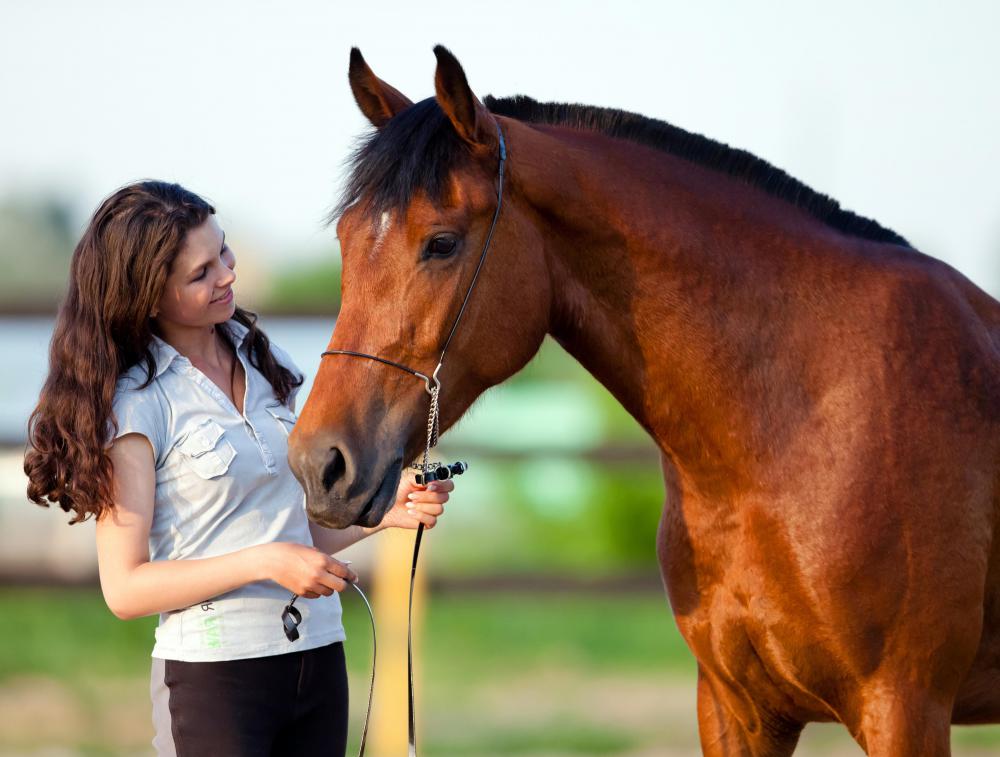At AllThingsNature, we're committed to delivering accurate, trustworthy information. Our expert-authored content is rigorously fact-checked and sourced from credible authorities. Discover how we uphold the highest standards in providing you with reliable knowledge.
What is Pacing?
Pacing is a lateral two beat gait displayed by horses and some other animals, such as camelids. As a general rule, an animal will not pace unless it comes from a species or breed which paces naturally; among horses, the Standardbred is probably most famous for its pacing ability, although a few other breeds pace as well. Pacers, as horses which can pace are known, are often highly prized for their ability to perform this somewhat unusual gait.
When horses pace, they bring both legs on one side of the body forward at the same time. This generates a rocking motion for the rider which can become very uncomfortable at high speeds, so riding horses are often trained to pace more slowly, for greater enjoyment on the part of the rider. At any given time while a horse is pacing, at least two legs are in contact with the ground, and the horse can cover a lot of ground, especially if it has long legs.

This gait falls between a trot and a canter in speed. Horses which can pace are said to be “gaited horses,” reflecting that they are capable of a gait beyond the familiar walk, trot, canter, and gallop. Pacing is generally encouraged in breeds which are bred to drive, with Standardbreds also being raced at the pace in harness races.
Among horses used for riding, the Icelandic is a well-known pacer. Icelandics have a gait called the skeið, or “flying pace,” which is actually quite comfortable to sit, despite the speed. Not all Icelandics develop this gait, and some develop a slower version, known as the “piggy pace,” which is generally considered undesirable.

In horses which have a natural ability to pace, the trait must often be brought out. Some trainers use special shoeing or gear to encourage their horses to pace, and once the gait has been established, they work on refining it. In the case of horses used in racing, the pace must be developed so that it is rapid enough for the horse to win, but it does not slip into a canter or gallop, and the endurance of the horse must also be built up so that it can compete on long traits. In riding horses, development of pacing abilities is focused on making the gait as smooth as possible.
Frequently Asked Questions
What is pacing in animals?
Pacing in animals refers to a repetitive, back-and-forth walking pattern often observed in captive animals, such as those in zoos or shelters. This behavior is typically a sign of stress, boredom, or frustration due to confinement, lack of stimulation, or an environment that does not meet the animal's natural behavioral needs.
Why do animals pace in captivity?
Animals pace in captivity primarily because their environment lacks complexity and fails to satisfy their instinctual behaviors. According to animal welfare experts, pacing can be a manifestation of psychological distress caused by factors such as small enclosures, absence of social interaction, or inadequate mental and physical challenges.
Can pacing be harmful to animals?
Yes, pacing can be harmful to animals. Chronic pacing may lead to physical health issues like joint problems or foot lesions and can indicate psychological distress. Long-term exposure to such stressors can weaken an animal's immune system and reduce its overall well-being, as reported in studies on zoo animal welfare.
How can pacing be reduced in captive animals?
To reduce pacing, caretakers can enhance the animal's environment through enrichment strategies. These include providing novel objects, creating complex habitats that mimic natural environments, and introducing varied diets or feeding methods. Social enrichment and training that encourages natural behaviors are also effective, as they stimulate the animal's mind and body.
Is pacing seen only in captive animals?
While pacing is most commonly associated with captive animals, it can also occur in domestic pets or animals in rehabilitation centers. Any environment that restricts an animal's ability to perform its natural behaviors can potentially lead to pacing, although it is less common in well-managed domestic settings.
Does pacing indicate that an animal is unhappy?
Pacing is a strong indicator of an animal's discomfort or unhappiness. It suggests that the animal's needs are not being fully met, whether those are physical, social, or psychological. Observing pacing behavior should prompt a review of the animal's care and environment to identify and address the underlying causes.
AS FEATURED ON:
AS FEATURED ON:












Discuss this Article
Post your comments